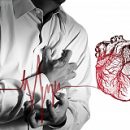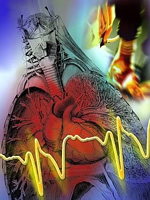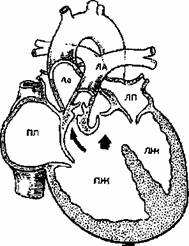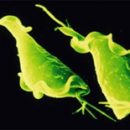From this article you will learn about the types, manifestations, diagnosis, principles of treatment and prevention of cardiosclerosis.
Content
Cardiosclerosis (from Greek «Kardia» - «a heart» and «Sklerosis» - «Seal»; synonymic name - myocardioosclerosis) - partial substitution of myocardial tissue with connecting cloth.
In other words, cardiosclerosis is the formation of scar tissue in the muscle of the heart, which replaces myocardium and is able to deform the heart valves.
Cardioosclerosis is developing in areas of the death of myocardial fibers in the outcome of myocarditis, severe myocardiodestrophs, including developing as a result of myocardium hypoxia for coronary heart disease, in the necrosis area with myocardial infarction.
Cardiosclerosis distinguish:
- Diffuse
- focal
Diffuse cardiosclerosis is characterized by a relatively uniform distribution of connective tissue elements throughout myocardium; develops with uniform damage to the heart muscle.
Focal (scar) cardiosclerosis - the formation of individual, different largest areas of scar tissue. Focal Cardiosclerosis can be expressed as the consequence of myocardial infarction or, which happens less often as the outcome of the inflammatory process.
The manifestations of myocardiosclerosis are stable arrhythmias and impairment of intracardiac conductivity, chronic heart failure. Atherosclerotic cardiosclerosis can cause valve flaps almost exclusively in the form of mitral deficiency (papipillial vice) or aortic valves.
At the atherosclerotic cardiosclerosis, angina attacks may occur, and chronic head aneurysm can also develop. Currently slowly progressive due to chronically recurrent (rheumatism) or progressive (atherosclerosis) of the nature of the main disease.
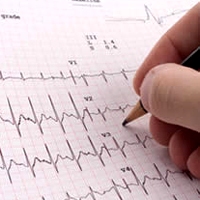 To definition a diagnosis, you will need to analyze:
To definition a diagnosis, you will need to analyze:- anamnesis;
- stability of manifestations of heart failure;
- Stability of heart arrhythmia;
- Electrocardiography results;
- Results of echocardiography.
Treatment is aimed at:
- improving the state of the preserved myocardial fibers;
- Elimination of manifestations of heart failure.
In some cases, it may be necessary to limit physical exertion. Heavy conduction disorders may be an indication for the implantation of a pacemaker.
Possible manifestations of cardiosclerosis, representing risk for life:
- ventricular paroxysmal tachycardia;
- preservative blockade.
Warning and timely treatment of the disease, the outcome of which is cardioosclerosis, is the best prevention of myocardiosclerosis.

